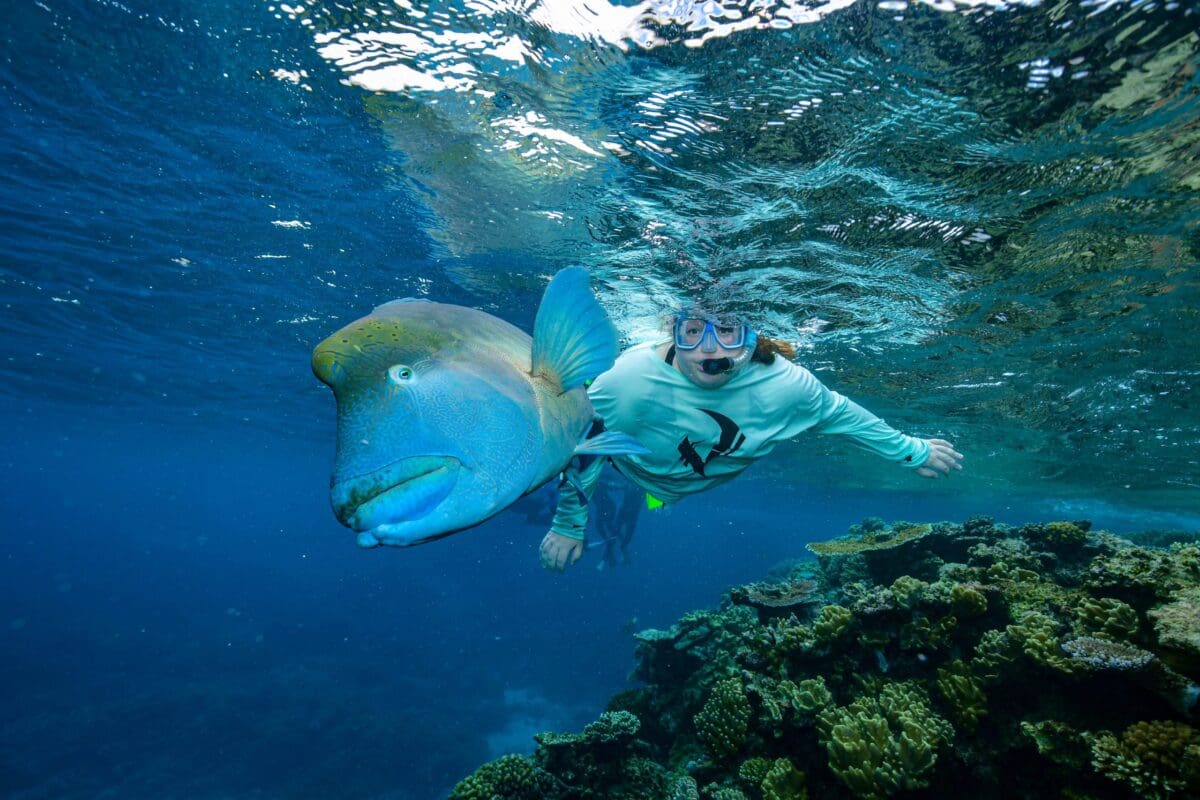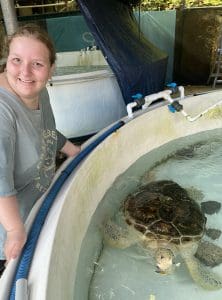UA Little Rock Student Spends Summer Uncovering Secrets of Great Barrier Reef in Australia

A UA Little Rock student had the opportunity to spend the summer exploring the beauty of the Great Barrier Reef, Australia’s great natural wonder containing the world’s largest collection of coral reefs.
Kelsey Miller, a junior biology major and Donaghey Scholar from Hardy, worked as an intern for GBR Biology from May 29 to July 20. Living in Cairns, Australia, she learned much while shadowing a team of marine biologists, promoting ecotourism, and working on coral reef natural resilience projects.
“I’ve always wanted to go to Australia, so I thought it would be really cool to work there,” Miller said. “Australia is beautiful, and it is full of different ecosystems and things that biologists love.”
Her summer internship included duties ranging from leading snorkeling tours, educating guests about the Great Barrier Reef and the effects of climate change, and giving marine biology presentations. One of her constant companions while snorkeling along the Great Barrier Reef was Wally the Humphead Māori Wrasse, a gentle giant of a fish that can grow up to six feet long and live for 30 or more years. Miller became so enamored with Wally that she got a tattoo of him before leaving Australia.

Another important aspect of her job was building coral resilience coral. Tropical coral reefs, like the Great Barrier Reef, are in decline around the world, leading to a loss of some of the world’s most valuable and diverse ecosystems. Miller worked with the MARS Assisted Reef Restoration Project, which works to stabilize areas of coral rubble for new generations of coral to attach. Miller helped to install hexagonal structures called reef stars, which provide a stable platform where coral can grow.
After a few years, the coral completely overgrows and engulfs the reef stars, which become fully integrated into the reef structure. This creates new habitats for fish and invertebrates and encourages the settlement of additional native corals.
“The Great Barrier Reef is under threat, so resilience projects like these are very important,” Miller said. “After installing the reef stars, we would place pieces of coral on them that had fallen off the reef naturally, which are known as coral fragments of opportunity. The reef stars provide stability for the coral and give them something to grow on and provide new habitat for fish.”
